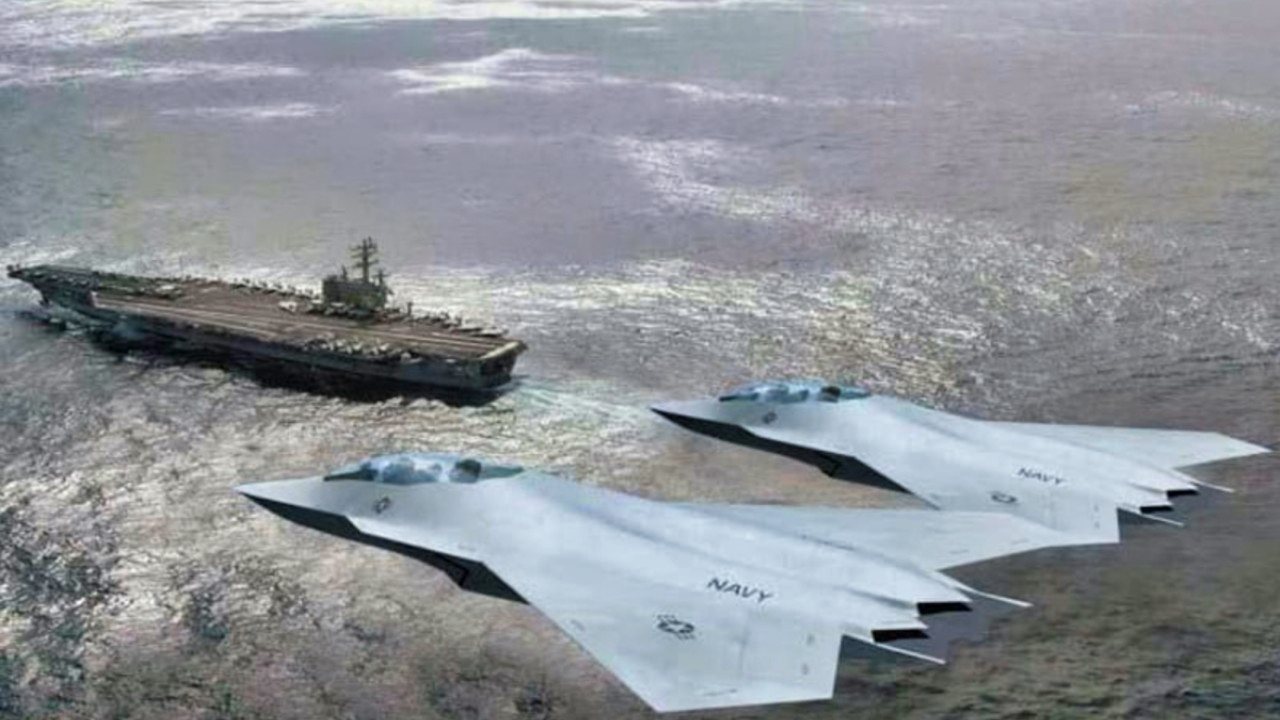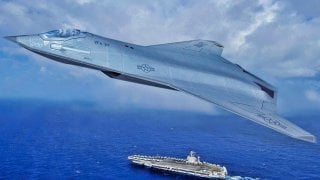F/A-XX: Navy Could Decide in 2025 on 6th Generation Fighter
Northrop Grumman CEO Kathy Warden announced that the U.S. Navy is expected to select a partner for its F/A-XX sixth-generation fighter program next year.
Summary and Key Points: Northrop Grumman CEO Kathy Warden announced that the U.S. Navy is expected to select a partner for its F/A-XX sixth-generation fighter program next year.

-Despite budget cuts, Warden is confident in the continuation of the competition. The F/A-XX aims to replace the F/A-18 Super Hornet, featuring advanced capabilities such as manned and unmanned operations, directed energy weapons, and drone control.
-While Northrop Grumman hasn't confirmed its participation, it stands well-positioned after exiting the Air Force's NGAD program. The Navy's decision will be pivotal as it navigates budget constraints while ensuring future air dominance.
Northrop Grumman CEO Predicts Navy's Sixth-Gen Fighter Selection in 2025
Over the course of last week, Northrop Grumman CEO Kathy Warden has announced expectations that the United States Navy will select its partner for the next generation fighter sometime next year. The sea service has kept its cards close to the chest regarding its F/A-XX sixth-generation fighter, but Warden expects that the U.S. Navy will formally announce which company will build the aircraft, even as the funding for the program has been scaled back.
"We have not received any updates that would suggest the Navy is changing their approach. They are in competition now for selection to occur next year," Warden stated during the company's second-quarter 2024 earnings call last Thursday.
The future of the U.S. Navy's Next Generation Air Dominance (NGAD) program – not to be confused with the U.S. Air Force program of the same name – has been in question, since the service announced it will be cutting $1 billion from its Fiscal Year 2025 (FY25) budget proposal. This development was closely followed by calls from Capitol Hill to trim defense spending, this was grim news for the U.S. Navy, as the service already has several big-ticket programs in the works.
"In terms of our overall collection of opportunities, we continue to believe that the Department of Defense will move forward with sixth-generation platforms. The timing is a bit in flux on many of them as they sort out budget priorities, but we are confident that we're well positioned when and if they do move forward," Warden added. With so much funding flying over to these sixth-generation flighters, what can be expected from the U.S. Navy’s latest improvements in aerial capabilities?
The F/A-XX – What We Know
The U.S. Navy's F/A-XX program seeks to develop a replacement for the carrier-based F/A-18 Super Hornet. Similar to the Air Force's NGAD effort, the F/A-XX has reached a pre-Milestone B phase, a point in the federal funding timeline that is just ahead of awarding a contract for engineering and manufacturing development.
"The F/A-XX will be a sixth-generation fighter jet with manned and unmanned capabilities," reported Stavros Atlamazoglu for the National Interest.
"The Navy is looking for an aircraft that would be able to operate from aircraft carriersit will require a stronger structure and landing gear compared to aircraft designed for conventional operations," Atlamazoglou added. "In terms of capabilities… the Navy is looking for a fighter jet that would have directed energy kinetic capabilities (laser weapons) and the ability to operate with and control drone swarms. As for mission sets, the Navy is looking for an aircraft that would be able to operate in permissive or semi-permissive environments with potent adversary air defense systems and establish air superiority through long-range kill chains."
The timeline isn't yet clear, but it is expected that the F/A-XX could enter service by the mid-2030s. That would line up with the U.S. Navy's current contract for the Super Hornet with aerospace giant Boeing, which will continue to produce the advanced Block III variant of the F/A-18 through 2027.
These developments supplement previous statements made by the United States Department of Defense's (DoD's) Undersecretary of Defense for Acquisition, Bill LaPlante, "I think they’re going to figure it out," LaPlante proclaimed during a speech at Farnborough, the largest aviation event in the United Kingdom. "It's not going to stop. It's going to continue. It's just going to be, well, better informed."

The programs will continue, possibly evolving from the original program’s goals.
Northrop Grumman Flying High
Warden has not confirmed that Northrop Grumman is competing to win the F/A-XX contract, but the company bowed out of the U.S. Air Force's NGAD program last year – leaving Boeing and Lockheed Martin to fight over scraps. As noted, Boeing produces the F/A-18 Super Hornet, while Lockheed Martin is the prime contractor on the F-35 Lightning II, including the F-35C carrier-based variant operated by the U.S. Navy.
Northrop Grumman is the prime contractor on the U.S. Air Force's B-21 Raider, the long-range strategic bomber that will replace the aging Rockwell B-1B Lancer and Northrop Grumman B-2 Spirit. In addition, Northrop Grumman manufactures components for both the F/A-18 and F-35.
In its Q2 2024 earning call, the company announced its "sales increased 7% to $10.2 billion, as compared with $9.6 billion in the second quarter of 2023."
Moreover, second-quarter 2024 sales reflected "strong demand" for its products and services, while Northrop Grumman's net earnings totaled $940 million, or $6.36 per diluted share, as compared with $812 million, or $5.34 per diluted share, in the second quarter of 2023.
"The Northrop Grumman team extended our strong performance into the second quarter with continued double-digit earnings growth, fueled in part by a 7 percent sales increase and expanding operating income. Our diverse portfolio includes capabilities in high demand and we have invested to create capacity and drive productivity to deliver differentiated capabilities for our customers," said Warden. "We are laser-focused on performance and continue to expand profitability through the deliberate actions we are taking. With strong support for our programs, growing global orders for our products, and solid execution in our business, we are increasing our revenue and EPS guidance for the year."
Author Experience and Expertise: Peter Suciu
Peter Suciu is a Michigan-based writer. He has contributed to more than four dozen magazines, newspapers, and websites with over 3,200 published pieces over a twenty-year career in journalism. He regularly writes about military hardware, firearms history, cybersecurity, politics, and international affairs. Peter is also a Contributing Writer for Forbes and Clearance Jobs. You can follow him on Twitter: @PeterSuciu. You can email the author: [email protected].
Image Credit: Creative Commons and/or Shutterstock.


